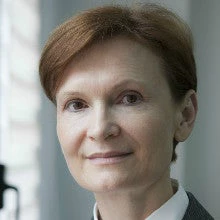 A nurse in Sint Marteen smiles on from a hospital room.
A nurse in Sint Marteen smiles on from a hospital room.
Behind the Caribbean’s stunning landscapes and lively culture, a powerful force is driving progress and pushing for change: Caribbean women. Although there has been substantial progress in advancing gender equality in the region, we must also acknowledge the challenges that persist, which prevent half of the population from fully contributing to the region's growth and development.
The challenges begin with availability of data. Gender-disaggregated data remain extremely scarce, making it difficult to assess the true picture and hampering efforts to address inequalities. The World Bank has partnered with Grenada, St. Lucia, Dominica and Jamaica to tackle this issue and here, highlight five trends in gender equality in the Caribbean:
- Academically, women outperform men but struggle to transition from school to work.
However, women’s educational success hasn’t resulted in better economic opportunities. For instance, in Grenada, Saint Lucia, and Jamaica, 1 in 3 young women are not engaged in education, employment, or training and are constrained due to their unequal role in family responsibilities, early pregnancy, and gender norms that relegate them to the domestic sphere.
- Despite rising employment rates, women still hold low-paying jobs.
Women in all four countries are more likely to participate in the workforce than their regional peers and, quality of employment – as measured by working conditions, and job security – is slightly higher among women. In Jamaica, women are also less likely than men to hold informal and vulnerable jobs.
Yet, on average, women work in low-paying sectors and earn less than men. For example, the OECS service industry is primarily female while men dominate agriculture, construction and similar fields. In Saint Lucia and Jamaica, men earn more than women across occupations, education levels, and the employment sector.
A World Bank-funded project within the OECS countries aims to level the playing field in one sector by increasing the number of women in aviation jobs and, in St Lucia, a renewable energy project is seeking to double the number of women in the field, through scholarships and apprenticeships.
- While female entrepreneurship rates are comparatively high, women are usually microentrepreneurs and need more access to finance.
The share of women-owned businesses in Grenada, Saint Lucia and Jamaica ranged from 32 percent to 57 percent, compared to 31percent on average in Latin America and the Caribbean . Still, in Saint Lucia, women mainly owned small businesses, with less than five workers and the same obtains for Grenada where these businesses usually operate within the tourism sector.
Challenges such as these are being tackled in Grenada through a project which provides women farmers with investment support and agricultural inputs and in Jamaica, women are receiving leadership training, mentorship, and technical assistance.
- Women in the Caribbean are often disproportionately affected by natural hazards, which can significantly impact their businesses and livelihoods.
In Dominica, 79.4 percent of women farmers reported severe damage and loss after Hurricane Maria in 2017. Single women-headed households were more vulnerable to the hurricane’s impacts and poverty. At the same time, women lacked access to finance to get back on their feet. After the hurricane, the World Bank provided grants to women farmers to help them recover their livelihoods and thereafter, worked to increase the number of women with insurance, safeguarding against future disasters.
This was also the case in Saint Lucia and Grenada where female-headed households are particularly vulnerable to storms and hurricanes, due to limited access to resources and insurance.
- Women’s political representation has significantly improved in the Caribbean, but their agency remains limited.
In Dominica, Jamaica and St. Lucia, women have held significant leadership positions including, Prime Minister and Governor General. Jamaica has also increased women’s political representation and adopted a policy, which requires at least 30 percent of officials in decision-making be women.
The World Bank supports Caribbean governments in developing and implementing gender-responsive laws, policies and budgets. For example, a Grenadian project promotes the inclusion of gender into the budgetary process and, efforts to address gender-based violence are being implemented through laws and policies.
Despite these measures, challenges remain, and intimate partner violence is still pervasive. In Jamaica, 1 in 4 women experienced physical violence in their lifetime, and when they sought help, about one-third didn’t receive it. This experience is mirrored in Grenada, where 1 in 5 women aged 15-64 believe that violence between a husband and wife is a private matter.
As we reflect on the progress made and the challenges which persist, let's keep pushing toward gender equality in employment, entrepreneurship, disaster resilience, and agency. The World Bank remains committed to supporting Caribbean countries in breaking down barriers and building a more equal and prosperous society.


Join the Conversation